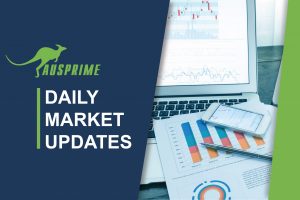MARKET UPDATE

Asia FX firms as dollar eases.
Most Asian currencies rose slightly on Tuesday, taking some relief from mild declines in the dollar before a key inflation reading which is set to offer more cues on U.S. interest rates this week.
Still, gains across regional currencies were limited, with most units remaining squarely within a trading range established over the past two months. The greenback also remained in sight of a recent three-month high.
Japanese yen firms as sticky inflation puts BOJ pivot in focus
The Japanese yen was among the better performers for the day, rising 0.2% from its weakest level in over three months after consumer price index inflation read slightly higher than expected for January.
The BOJ is widely expected to end its yield curve control and negative interest rate policies this year, with sticky inflation potentially giving the central bank more impetus to do so sooner than later.
Bitcoin breaks $57,000.
Bitcoin hit a two-year high on Tuesday on signs of large players buying the cryptocurrency, while smaller rival ether topped $3,200 for the first time since 2022.
Bitcoin has rallied more than 10% in two sessions, helped by a Monday disclosure from crypto investor and software firm MicroStrategy that it had recently purchased about 3,000 bitcoins for an outlay of $155 million.
The original and largest cryptocurrency by market value has also been buoyed recently by the approval of bitcoin-owning exchange-traded funds (ETFs) in the United States. On Monday, trading volumes in several of the funds spiked and crypto-linked firms rallied too, in contrast to nervous broader markets.
Bitcoin rose as far as $57,036 in the Asian morning its highest since late 2021. Ether rose as far as $3,275, its highest since April 2022.
There’s only so much supply … but the demand unleashed by the U.S. spot ETFs seems to be relentless,” said Justin d’Anethan, head of partnerships in Asia at Keyrock, a digital asset market maker.
Gold prices remain rangebound with inflation.
Gold prices stuck to a tight range in Asian trade on Tuesday as investors looked to a swathe of upcoming economic data for more trading cues, although the near-term outlook for the yellow metal remained constrained.
Bullion prices also remained largely within a $2,000 to $2,050 an ounce trading range established over the past two months, as any potential upside in the yellow metal was largely quashed by the prospect of higher for longer U.S. interest rates.
Several comments from Federal Reserve officials furthered this notion, as they signalled that the bank was in no hurry to begin loosening policy due to sticky inflation. The dollar remained close to three-month highs on this notion.
Spot gold rose 0.1% to $2,033.36 an ounce, while gold futures expiring in April rose 0.2% to $2,042.60 an ounce by 00:25 ET (05:25 GMT).
PCE inflation, GDP data awaited for more trading cues
Gold investors were now awaiting key U.S. economic data to dictate the next leg of movement for metal markets.
PCE price index data- the Fed’s preferred inflation gauge- is due this Thursday, and is expected to show inflation remaining sticky, giving the Fed little impetus to consider rate cuts.
Before that, a second reading on fourth-quarter GDP data is expected to show mild cooling in the U.S. economy, but not to the extent that the Fed will be pushed into loosening policy.
Important Note: The information found on Ausprime platform is intended only to be informative, is not advice nor a recommendation, nor research, or a record of our trading prices, or an offer of, or solicitation for a transaction in any financial instrument and thus should not be treated as such. The information provided does not include any specific investment objectives, financial situation and needs of any specific person who may receive it. The past performance is not a reliable indicator of future performance and/or results. Past Performance or Forward-looking scenarios are not a guarantee of future performance. Actual results may differ materially from those anticipated in forward-looking or past performance statement